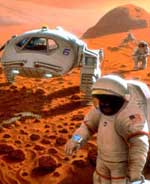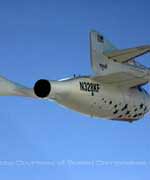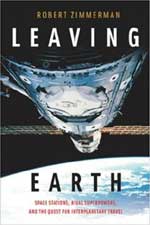
Image credit: NASA
A NASA-funded study has found the human body’s ability to fight off disease may be decreased by spaceflight. The effect may even linger after an astronaut’s return to Earth following long flights.
In addition to the conditions experienced by astronauts in flight, the stresses experienced before launch and after landing also may contribute to a decrease in immunity.
Results of the study were recently published in “Brain, Behavior, and Immunity.” The results may help researchers better understand the affects of spaceflight on the human immune response. They may also provide new insights to ensure the health, safety and performance of International Space Station crewmembers and future spacefarers on extended missions.
“Astronauts live and work in a relatively crowded and stressful environment,” said Duane Pierson, the study’s principal investigator and NASA Senior Microbiologist at Johnson Space Center, Houston. “Stresses integral to spaceflight can adversely affect astronaut health by impairing the human immune response. Our study suggests these effects may increase as mission duration and mission activity demands increase,” he added.
The white blood cell count provides a clue to the presence of illness. The five main types of white cells work together to protect the body by fighting infection and attacking foreign material. The most prevalent white blood cells are called neutrophils.
From 1999 to 2002, scientists from NASA, Enterprise Advisory Services, Inc., of Houston, and the Boston University School of Medicine compared neutrophil functions in 25 astronauts. They made comparisons after five-day Space Shuttle missions and after nine to 11 day missions.
Researchers found the number of neutrophils increased by 85 percent at landing compared to preflight levels. Healthy ground control subjects, who did not fly, exhibited no more than a two percent increase. Researchers also discovered functions performed by these cells, specifically ingestion and destruction of microorganisms, are affected by factors associated with spaceflight. The effect becomes more pronounced during longer missions.
The increase in astronaut neutrophil numbers resulted in a corresponding increase (more than 50 percent) in total white blood cell counts at landing. The increase is a consistent consequence of stress.
Pierson emphasized that “no astronauts in the study became ill; however, longer exploration missions may result in clinical manifestations of decreased immune response.”
Researchers concluded the general effect of spaceflight, pre- and post flight-related stress decreases the ability of crewmembers’ neutrophils to destroy microbial invaders. This finding suggests crewmembers returning from longer missions may be briefly more susceptible to infections than before launch, because these cells are not as efficient in ingesting and destroying infectious agents.
“Having a better understanding of the impact of stress on immunity will help us better understand the risks of infectious disease for Space Station crewmembers and future travelers on long-duration missions,” Pierson said.
For information about NASA’s space research on the Internet, visit:
http://spaceresearch.nasa.gov/
Original Source: NASA News Release



